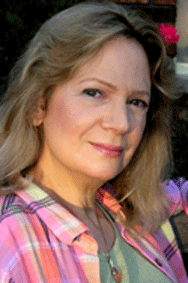Note to Readers – Every now and then, I will re-post a blog entry that has withstood the test of time. Whether you missed it the first time ‘round or read it years ago, I feel it’s worth sharing again. I chose When Good Words Go Bad from July 20, 2014 because people are loudly debating the difference between what people are saying and what they really mean. The English language has always been fluid. We know what that is doing to political and public discourse today. Rules are different for authors. Here’s what they need to keep in mind with their writing.
William Shakespeare is considered by most literary historians and critics to be the best writer ever in the English language. The fact that his work has endured for four centuries supports the point. Yet Shakespeare is shunned by many readers once they graduate from school. Chaucer’s The Canterbury Tales? Beowulf (author unknown)? Fuggedaboutit! Some of the greatest literature of the English language seems written in a foreign language, with the same effect on readers that garlic breath has on lovers.
Readers don’t like to be stopped midsentence by a word so archaic that a trip to the dictionary becomes necessary. Even trickier is when a word is recognized but misinterpreted and one is left to question the author’s objective. You’ll find an example in Shakespeare’s Hamlet, where the troubled prince tells Ophelia, “Get thee to a nunnery!” Most readers interpret “nunnery” as a convent. In Elizabethan parlance, however, “nunnery” could also mean brothel. Shakespeare seems to leave it to the reader to decide Hamlet’s intention.
In today’s vernacular, we find words taking on opposite meanings from their original definitions. One example is “sick”, used to mean “awesome” (“bad” was the stand-in for “awesome” in the ‘80s, but “bad” is now back to being … bad). “The bomb” can be a disaster or a triumph. “Catfish” is something you would rather eat than have one eat you. Hurling “you bitch” is quite different from yelling “you’re my bitch”, although you probably don’t want to be at the receiving end of either phrase, unless you really are a female canine.
You can find more words that have taken on the opposite meaning of their original definition at Mental Floss.
Just as old words change over time, new words are invented every year that may send you to your cyber-dictionary if you haven’t kept up with cultural trends. Have you considered buying a “turducken” with a “bitcoin” lately? Using Twitter to Tweet no longer makes you a twit; now you are a “tweep”. Somehow, “fracking” sounds like an appropriate word for what we are doing to our planet to extract its petroleum resources.
English is an ever-evolving language. That’s its beauty and its challenge, both for authors and for readers. Like interior decorating or clothing fashion, what trends today in language may be outdated or obsolete by next year. Using trendy words to set a period piece is smart. Using trendy words in a timeless piece could end up smarting.
There’s no such thing as bad words; only bad writers (oh, what did she mean by that?).
For an entertaining take on our abuse of the English language, visit Weird Al Yankovich’s YouTube video.

